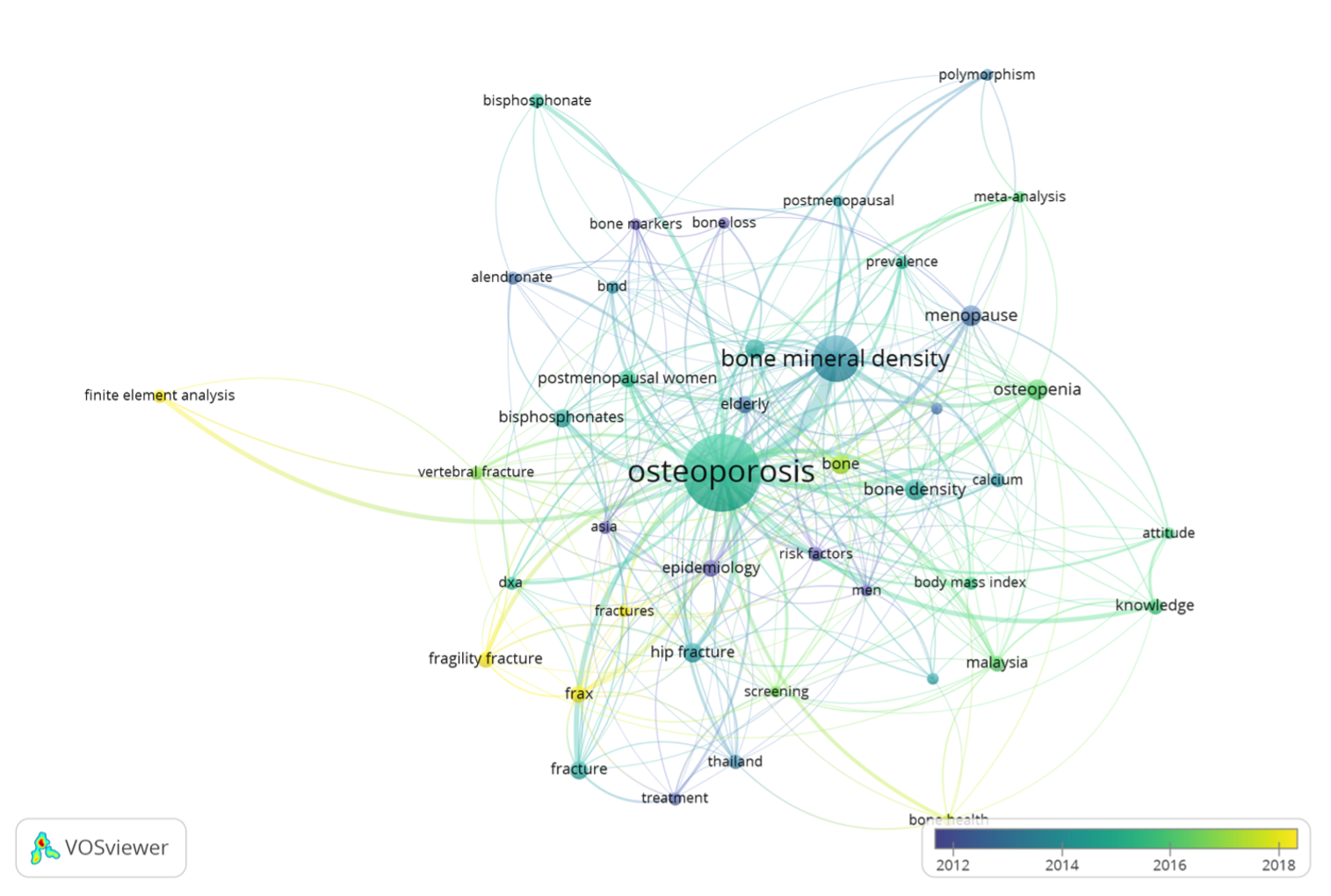VOLUME 18 NUMBER 1 (January to June 2025)

SciEnggJ. 2025 18 (1) 167-176
available online: 19 May 2025
DOI: https://doi.org/10.54645/2025181WTZ-46
*Corresponding author
Email Address: eppacheco@gmail.com; eppacheco@up.edu.ph
Date received: 29 January 2025
Dates revised: 20 March 2025;
28 April 2025; 11 May 2025
Date accepted: 12 May 2025
ARTICLE
A bibliometric analysis of osteoporosis research trends in Southeast Asia: A 50-year review
City, Ortigas Avenue, Pasig City, Philippines
2Department of Physiology, College of Medicine, University of the
Philippines Manila, Ermita, Manila, Philippines
3Division of Endocrinology, Diabetes and Metabolism,
Department of Medicine, University of the Philippines –
Philippine General Hospital, Taft Avenue, Manila, Philippines
Background and aims: The aging population in Asia is increasing exponentially, contributing to a rise in age-related conditions such as osteoporosis. Osteoporosis reduces bone strength and increases bone fragility, leading to fracture and disability. A barrier to improving osteoporosis care is the lack of evidence and knowledge about this disease. Hence, it is essential to assess the research landscape of osteoporosis in Southeast Asia (SEA) and determine the factors associated with scientific productivity. This bibliometric analysis showed the research productivity and its correlation with socioeconomic indices in SEA. This study identified the research trends, gaps, and factors associated with scientific productivity in osteoporosis research in SEA.
Methods: Using the Scopus database, a comprehensive search on osteoporosis research between 1972 and 2022 was conducted. Published research articles on osteoporosis conducted in SEA or articles with at least one of the authors from SEA were included. Bibliometric indices and socioeconomic data were obtained and summarized in tabular form. Spearman's rank-order correlation was used to determine the relationship between socioeconomic and epidemiologic factors and scientific productivity. VOSviewer software was used to visualize collaboration and keywords.
Results: The analysis comprised 1175 papers in total. Thailand, Singapore, and Malaysia have the region's highest research productivity and impact. The focus of osteoporosis research in SEA was on screening/risk assessment, diagnosis, treatment, and its adverse effects. The gross domestic product, GDP per capita, research and development expenditures, number of physicians and researchers, and international collaboration were correlated with increased osteoporosis research productivity. However, there was a negative correlation between SEA country’s osteoporosis prevalence and disability-adjusted life years (DALY) attributed to low bone mineral density (BMD) with research impact and research productivity, respectively.
Conclusions: This study showed the general landscape, outputs, and productivity in osteoporosis research in SEA. Each SEA country should promote international research partnerships and increase research support to increase productivity and quality and fill knowledge gaps on osteoporosis in the region.
© 2025 SciEnggJ
Philippine-American Academy of Science and Engineering